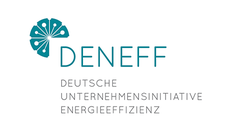Search eceee proceedings
Compressed air systems: factors affecting the adoption of measures for improved efficiency
Panel: 2. Sustainable production towards a circular economy
This is a peer-reviewed paper.
Authors:
Andrea Trianni, University of Technology Sydney, Australia
Enrico Cagno, Politecnico di Milano, Italy
Marco Nicosia, Politecnico di Milano, Italy
Abstract
The sustainability and competitiveness of industrial activities may strongly rely on increased energy efficiency. In that, compressed air could be one of the most expensive forms of energy in industry because of its low efficiency (usually lower than 20%). Nonetheless, compressed air is widely used, and is considered as relevant in many facilities, accounting for even more than 10% of industrial electricity consumption in the EU, in US and in China. Moreover, it should be noted that the life-cycle cost of a compressed air system is mostly covered by the operating costs, so that most of the measures to lower energy consumption pay for themselves almost immediately, producing relevant monetary savings. Nevertheless, several studies show that the adoption rae of such Energy Efficiency Measures (EEMs) is still low. For this reason, we have carefully reviewed scientific and industrial literature over EEMs for Compressed Air Systems (CAS), so to get useful insights into the main factors leading to their adoption. Our studies lays a good foundation for a novel framework aimed at describing and characterising EEMs in CAS, revealing that, so far scientific and industrial literature has mostly presented energy and economic factors, thus giving little room to other factors that still could be quite relevant for an effective EEM adoption, such as compatibility of the measure within the production system (e.g., adaptability to different conditions, presence of different pressure loads), complexity of the production system (e.g., accessibility for operational activities, expertise required for implementation), observability of the performance (e.g., impact on air quality and /or safety). The framework could result in a valuable tool offering different perspectives in the decision-making of industrial managers and technology suppliers, as well as industrial policy-makers.
Downloads
Download this paper as pdf: 2-040-18_Trianni.pdf
Download this presentation as pdf: 2-040-18_Trianni_pres.pdf















